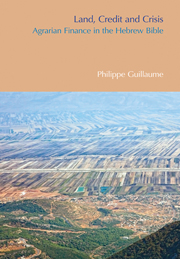8 - Life in Yehud
from Part III - No Crisis in Yehud
Summary
Demography in Yehud
The publication of the results of systematic surveys and of salvage excavations enabled quantitative studies with population estimates. There is an overall consensus that the destruction of Jerusalem had disastrous effects on the immediate periphery of the city. In Benjamin, the population gathered around the large tells of the area: Mizpah/Tell en-Nasbeh, Gibeon/el-Jîb, Gibeah/Tell el-Fûl. The case of Bethel/Beitin is disputed.
Finkelstein and Singer-Avitz (2009) claim that Bethel was probably uninhabited or almost deserted in the Babylonian and Persian periods. Given the difficulties in the interpretation of Kelso's excavations at Beitin, no firm conclusions can be drawn from its results (Knauf 2006). Then, there is enough leeway between ‘probably uninhabited’ and ‘almost deserted’ to leave open the possibility of some cultic and scribal activity, either at Bethel or at nearby Mizpah. If a sale contract from the antiquity market concerning a young bullock at an unidentified Jewish site in Babylonia is enough to support the existence of an academy that produced the Deuteronomistic History (Römer 2003), the evidence in favour of Bethel remains overwhelming, despite Finkelstein's doubts. Maybe ancient Bethel was sited elsewhere, at el-Bireh rather than at Beitin, and Beitin was Beth-Aven (Wood 2008). Whether or not Bethel was inhabited, the Benjamin region was the most densely populated area in Yehud and Bethel is mentioned eleven times in the Torah, Jerusalem never.
Archaeological surveys suggest that only a third of Late Iron Age sites were occupied during the Persian period (216 sites out of 586).
- Type
- Chapter
- Information
- Land, Credit and CrisisAgrarian Finance in the Hebrew Bible, pp. 227 - 232Publisher: Acumen PublishingPrint publication year: 2012



